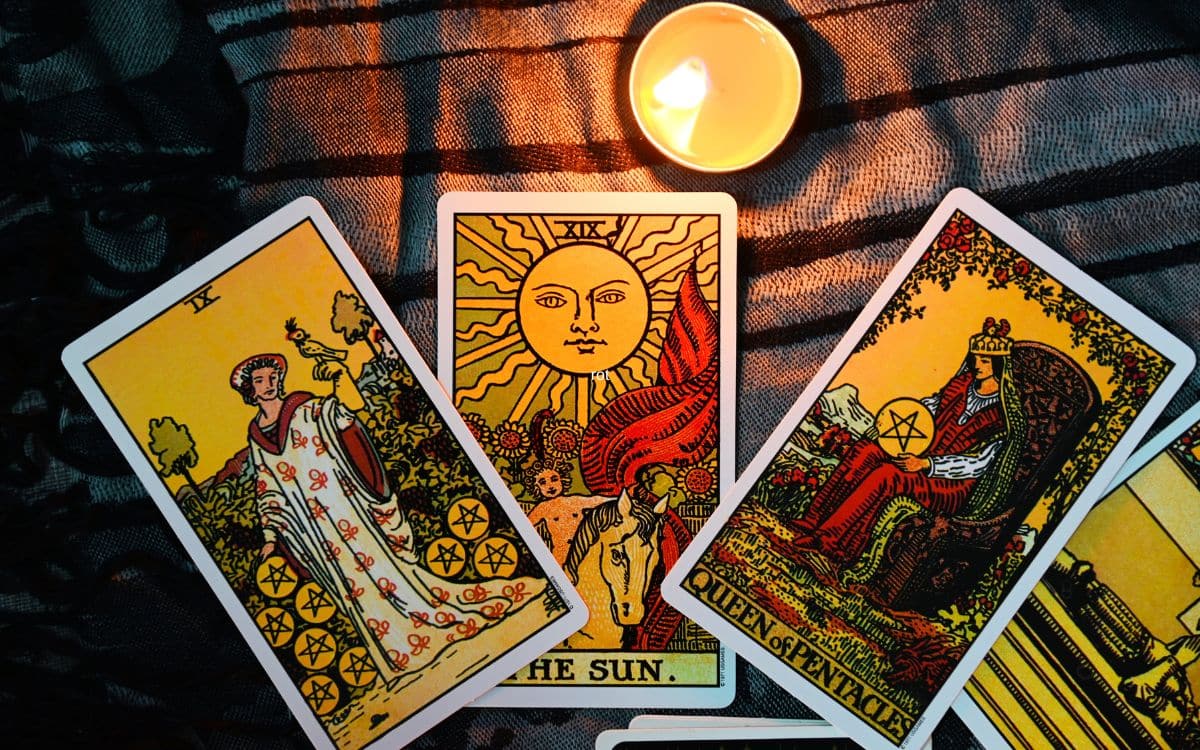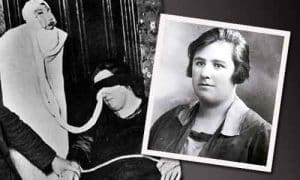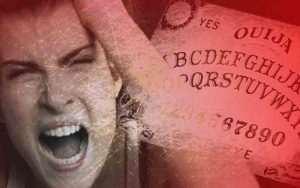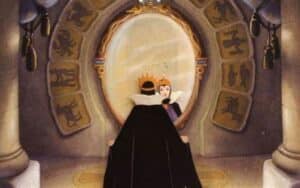Tarot cards have been used for centuries for divination and self-discovery. These mystical cards can offer insight into our past, present, and future, helping us understand ourselves and our lives better. Here are 10 things you need to know about tarot cards.
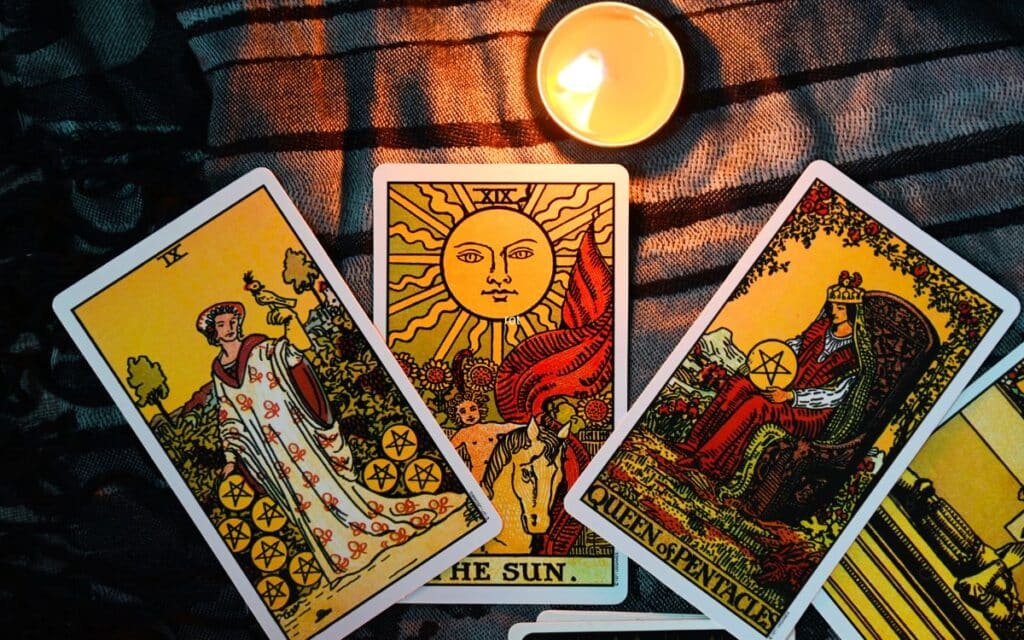
Tarot cards are not evil
Tarot cards have a long history of being associated with evil and the occult, but this is a misconception. Tarot cards are simply tools for divination and self-discovery, and they should be used in a positive and ethical manner.
Tarot cards have a rich history
Tarot cards have been used for divination and self-discovery for over 500 years. They originated in Italy in the late 14th century and were initially used as playing cards. It wasn’t until the 18th century that tarot cards began to be used for divination purposes.
Tarot cards have 78 cards
A tarot deck consists of 78 cards, divided into the Major Arcana (22 cards) and the Minor Arcana (56 cards). The Major Arcana cards represent significant events or themes in our lives, while the Minor Arcana cards represent everyday events and experiences. Each card in the Tarot deck has its own unique symbolism and meaning. Here is a list of the 22 Major Arcana cards and their general interpretations:
- The Fool: new beginnings, innocence, taking a leap of faith
- The Magician: manifestation, resourcefulness, power of communication
- The High Priestess: intuition, mystery, subconscious mind
- The Empress: nurturing, abundance, creativity
- The Emperor: stability, authority, structure
- The Hierophant: tradition, spirituality, guidance
- The Lovers: love, choices, relationships
- The Chariot: determination, control, direction
- Strength: courage, inner strength, self-discipline
- The Hermit: introspection, solitude, wisdom
- Wheel of Fortune: cycles, destiny, change
- Justice: fairness, balance, cause and effect
- The Hanged Man: patience, sacrifice, perspective
- Death: transformation, endings, renewal
- Temperance: moderation, balance, patience
- The Devil: temptation, addiction, materialism
- The Tower: upheaval, chaos, revelation
- The Star: hope, inspiration, healing
- The Moon: fear, illusion, subconscious
- The Sun: joy, success, positivity
- Judgement: self-reflection, accountability, judgement day
- The World: completion, fulfillment, integration
Note that these are general interpretations and the meaning of each card can vary depending on the context of the reading and the individual reader’s interpretation.
Tarot cards have symbolic meanings
Each tarot card has a specific meaning and interpretation, and the combination of cards in a reading can offer insight into our lives. The symbolism of each card is based on a rich tradition of mythology, religion, and esoteric teachings.
Tarot readings require interpretation
Tarot readings are not set in stone, and they require interpretation and intuition on the part of the reader. A tarot reading can offer multiple interpretations and possibilities, and it’s up to the individual to decide what the cards mean to them.
Tarot readings are not predictions
Tarot readings are not meant to predict the future, but rather to offer insight into possible outcomes based on our current actions and choices. The future is not set in stone, and our choices and actions can change the outcome.
Tarot readings should be done in a positive and ethical manner
Tarot readings should always be done in a positive and ethical manner, without the intention of causing harm to anyone. The reader should always have the best interests of the person receiving the reading in mind.
Tarot readings can be done by anyone
Anyone can learn how to read tarot cards, and there are many resources available for learning, including books, online courses, and workshops. It’s important to remember that it takes time and practice to become proficient in reading tarot cards.
Tarot cards should be chosen carefully
It’s important to choose a tarot deck that resonates with you and feels comfortable to work with. Tarot decks come in many different styles, from traditional to modern, and it’s important to find a deck that speaks to you.
Tarot readings can be a valuable tool for self-discovery
Tarot readings can offer valuable insight into our lives, helping us understand our past, present, and future. They can also help us understand ourselves better, and provide guidance and support as we navigate life’s challenges.
In conclusion, tarot cards are a powerful tool for divination and self-discovery, and they have a rich history and tradition. Whether you are a seasoned tarot reader or just starting out, tarot cards can offer valuable insight and guidance as you navigate life’s journey.
15 Frequently Asked Questions About Tarot Cards
What is the history of the Tarot and how did it become associated with divination?
The history of the Tarot can be traced back to medieval Europe, where the first Tarot cards were created as a card game. It was not until the late 18th and early 19th centuries that Tarot cards became associated with divination, as occultists and mystics began to interpret their imagery and symbolism as a means of communicating with the divine.
Can anyone learn to read Tarot cards, or is it a special gift that only certain individuals possess?
While some individuals may have a natural talent or affinity for reading Tarot cards, anyone can learn to read the cards with practice and dedication. The key to becoming a skilled Tarot reader is to develop an intuitive understanding of the cards and their meanings, which can be achieved through study and experience.
What are the different types of Tarot decks and how do they differ from one another?
There are many different types of Tarot decks, each with their own unique imagery and symbolism. Some of the most popular decks include the Rider-Waite-Smith deck, the Thoth deck, and the Marseille deck. Each deck has its own distinct style and cultural influence, and readers often choose decks based on their personal preferences and aesthetic tastes.
Is it possible to use Tarot cards for self-reflection and personal growth without necessarily believing in their mystical powers?
Yes, Tarot cards can be a powerful tool for self-reflection and personal growth, regardless of one’s beliefs in their mystical powers. By using the cards as a mirror for one’s own thoughts and feelings, individuals can gain valuable insights into their own subconscious and find new ways of approaching personal challenges and goals.
How do Tarot readings differ from other types of divination, such as astrology or palm reading?
While all forms of divination share the goal of providing insight and guidance, Tarot readings are unique in their use of symbolic imagery and archetypal themes. Unlike other forms of divination, Tarot readings often involve a dialogue between the reader and the seeker, as the cards are interpreted and discussed in the context of the seeker’s specific questions or concerns.
What are the ethical considerations involved in providing Tarot readings, especially when dealing with sensitive or personal issues?
Ethical considerations in Tarot readings include issues of confidentiality, consent, and professionalism. Readers should always respect the privacy and autonomy of their seekers, and ensure that they are providing accurate and responsible guidance based on the cards.
How accurate are Tarot readings, and can they provide real insights into someone’s life and future?
The accuracy of Tarot readings varies depending on the skill and experience of the reader, as well as the seeker’s openness to the messages of the cards. While Tarot readings cannot predict the future with absolute certainty, they can offer valuable insights into the seeker’s current circumstances and potential outcomes based on their actions and choices.
What is the significance of the Major Arcana cards in Tarot, and how do they relate to the journey of the Fool?
The Major Arcana cards in Tarot represent major life themes and archetypal energies, such as the Fool’s journey through the stages of life and spiritual growth. Each card has its own distinct meaning and symbolism, and can be interpreted in a variety of ways depending on the context of the reading.
Are there any common misconceptions or stereotypes about Tarot readers and the practice of Tarot?
Common misconceptions about Tarot readers include the belief that they are all frauds or charlatans, or that they are involved in occult or demonic practices. In reality, Tarot readers come from a variety of backgrounds and belief systems, and use the cards as a tool for self-discovery and guidance.
Can Tarot readings be used in combination with other spiritual or therapeutic practices, such as meditation or psychotherapy?
Yes, Tarot readings can be used in combination with other spiritual or therapeutic practices, such as meditation or psychotherapy. By integrating Tarot readings into a larger practice of self-care and personal growth, individuals can gain a deeper understanding of their own subconscious patterns and behaviours.
How do the meanings of Tarot cards vary depending on the specific deck or individual interpretation?
The meanings of Tarot cards can vary depending on the specific deck, the individual reader’s interpretation, and the context of the reading. While there are common themes and symbols that are often associated with each card, readers often develop their own unique interpretations based on their intuition and experience.
How has the internet and modern technology impacted the practice and culture of Tarot readings?
The internet and modern technology have greatly expanded the accessibility and visibility of Tarot readings, with many readers offering their services online through social media platforms or dedicated websites. However, this increased visibility has also led to concerns about the commercialisation and exploitation of Tarot as a tool for entertainment or profit.
How can Tarot be used as a tool for manifestation and goal-setting, rather than just prediction or divination?
Tarot can be used as a tool for manifestation and goal-setting by using the cards to visualise desired outcomes and track progress towards specific goals. By incorporating Tarot readings into daily or weekly goal-setting practices, individuals can gain a deeper understanding of their own desires and motivations, and stay focused on the actions needed to achieve their desired outcomes.
Are there any dangers or risks associated with Tarot readings, such as opening oneself up to negative energies or misinterpreting the cards?
While there are no inherent dangers or risks associated with Tarot readings, seekers should be aware of the potential for misinterpretation or the influence of personal biases and assumptions. It is important for seekers to approach Tarot readings with an open mind and a willingness to engage in a dialogue with the reader, rather than expecting the cards to provide a definitive answer or prediction.
Can Tarot readings be used for group or collective insights, such as predicting social or political trends, rather than just personal guidance?
Tarot readings can be used for group or collective insights by focusing on larger societal or cultural trends and patterns. By interpreting the cards in the context of specific social or political issues, readers can offer insights and perspectives that may be difficult to access through traditional forms of analysis or research. However, it is important for readers to approach these readings with sensitivity and awareness of the complex and multifaceted nature of social issues.
Watch Introduction to Tarot Cards Video
You can find out more about Tarot Cards from reading books from Amazon

